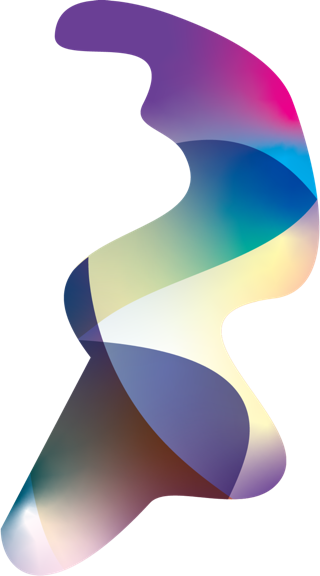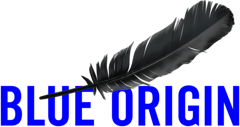ART IN SPACE
RULES & ELIGIBILITY
PLEASE NOTE: The deadline for this opportunity has passed.
What is this about?
This contest will accept submissions of interesting designs for art experiments in space from students working with adult mentors worldwide. Two ideas will be chosen by us, OK Go, and the teams who submitted them will work with us on creating an art experiment to send as a payload on a Blue Origin spacecraft. For real.
Who Can Enter?
Students from the ages of 11-18 (as of May 5th, 2019) are eligible to enter the contest in groups of 3 or more. Each group must have an adult mentor (21+ years old) to sponsor them and submit the application on their behalf.
What are the criteria for selection?
We will be looking for the most creative and original ideas that utilize as many diverse skill sets as possible! That’s how we create our videos, by thinking up an idea, asking ourselves if it is possible, and then problem solving with skills that tap into math, art, physics –– all subject areas! The essays you submit should show clarity of your idea in written and visual form, how the design is specifically created for the space environment, and demonstrate of the feasibility of the design working in space. But don’t worry, we’ll help you figure out the real feasibility and operation in space. It’s the idea that really matters.
What happens to the chosen designs?
OK Go will choose two designs as winners. Those winning student/mentor teams will then work together with our team of engineers and aerospace experts to bring that design to life, through video (or phone) calls and frequent design updates from the engineering team. All materials will be provided by OK Go Sandbox. Winning teams will also have a video conference with members of the band OK Go. After flight, the payload, and video/photographs of its flight will be given to the teams that submitted the winning designs.
Note that final design will be determined by OK Go Sandbox, so as to ensure flight worthiness.
What is the timeline?
- MARCH 5TH, 2019: Contest Announced
- MAY 6TH, 2019, 11:59pm CDT: Submission Deadline
- JUNE 2019: Winners announced
- SEPTEMBER 2019: OK Go Sandbox and winning teams begin collaboration
- 2020 date TBD: Launch
What are the restrictions on our proposed art project?
Size:
Must be within the size constraints of 4” x 4” x 7.874” (length x width x height)
Weight:
Must not exceed 1.1lb in mass
Power Usage:
Your design may use power but:
- Power is available for five minutes before launch, during the flight and for 5 minutes after landing.
- Must not use more than 4.5 W of power.
- Will not be supplied with more than 5V of DC power
- Will not be supplied with more than 500 mA of current with a USB 2.0 connection, or 900 mA of current with a USB 3.0 connection
Temperature and humidity:
- Must be possible within 20-70% humidity
- Must function within the temperature range of 50-90 degrees F
Data Interface:
During flight, the payload will receive real-time flight information received from the New Shepard Vehicle via USB interface. You are able to utilize this data in your design. More specifics on the data interface can be found below.
(Note that the OK Go Sandbox team will work with the winning designs to ensure that all requirements are met. Our engineers will help you work it out!)
How do I enter?
To enter this competition, teams should submit the following documents:
- Essay
Write a description of your art project in 500 words or less. Your essay should include:- An overview of what your project looks, acts, sounds, or moves like so that we understand your artistic vision.
- An explanation as to why it is important for your project to be completed in space. How will your project change when it leaves earth’s atmosphere?
- A brief outline as to how you will propose that the project will be built. What materials and resources are needed? (Note: if your design is chosen, engineers from the OK Go Sandbox team will work with you to create the version that will go into space.)
- Any other important information about your project that you have not yet covered. Remember, YOU are the experts on your project, and WE want to learn about it.
- Drawing(s) of the apparatus design should accompany the essay.
- Safety Questionnaire
Does your design involve: Yes No Living or dead creatures Fire
(all materials must be self-extinguishable and not ignite surrounding materials)Bodily fluids Weapons Explosives - Team information
- Adult advisor (21 years of age or older) name, email address, mailing address and phone number
- Names and ages of all team members (there must be at least three team members, and all must be between the ages of 11-18 as of May 5th, 2019)
Data Interface Details:
Data packets will be sent at 115,200 bits per second. The data itself will be configured as 8 data bits, no parity, and 1 stop bit per frame.
- To receive data, the payload must be a recognizable serial device when loaded on the New Shepard
- The data packets will be an ASCII string of 21 comma-separated fields. The size of the packets will not exceed 200 bytes, and no field will exceed 20 bytes in size.
- Data will be sent at 10 Hz throughout the flight, beginning roughly 1 minute after the payload is powered up, and stopping roughly 5 minutes after the landing flight
The order of the data fields along with a description of each are as follows:
- Flight state – The current flight state as a single ASCII character; possible flight states are:
- None Reached: ‘@’ = No flight state has been reached yet (typically the time prior to liftoff).
- Liftoff: ‘A’ = This state is triggered once sensed acceleration first changes due to engine ignition.
- Meco: ‘B’ = This state is triggered after the rocket’s main engine cuts out, and the flight enters its coast stage.
- Separation: ‘C’ = This state occurs after the rocket and capsule separate, shortly before the microgravity portion of the flight begins.
- Coast_Start: ‘D’ = This state indicates the beginning of the cleanest microgravity operations onboard the capsule, most experiments should begin logging data at this time.
- Apogee: ‘E’ = This state occurs when the vehicle has reached its maximum altitude and begins to descend.
- Coast_End: ‘F’ =This state indicates the end of microgravity operations onboard the capsule, as we begin to experience atmospheric accelerations. Many experiments will cease logging data at this time.
- Under_Chutes: ‘G’ = This state indicates that drogue parachutes have deployed and the capsule is in its final descent.
- Landing: ‘H’ = This state occurs after capsule touchdown.
- Safing: ‘I’ = After touchdown, this state indicates that the capsule is venting and safing all energetic systems.
- Finished: ‘J’ = This state is only ever reached in simulation and indicates the end of the logged flight data.
- Experiment time – The current experiment time in seconds as a decimal number with 2 digits following the decimal point.
- Altitude – The current vehicle altitude above ground level in feet as a decimal number with 6 digits following the decimal point.
- Velocity x-axis – The current vehicle velocity in feet per second along the vertical axis of the capsule as a decimal number with 6 digits following the decimal point.
- Velocity y-axis – same as (4) but for the y-axis.
- Velocity z-axis – same as (4) but for the z-axis.
- Acceleration – The magnitude of the current vehicle acceleration in feet per second squared as a decimal number with 6 digits following the decimal point.
- Reserved – This field is currently not used. It will have a placeholder value of 0 with six 0 digits following the decimal point.
- Reserved – This field is currently not used. It will have a placeholder value of 0 with six 0 digits following the decimal point. NanoRacks Feather Frame Payload User’s Guide Doc No: NR-BLUE-W0001 Rev: - Page 13
- Attitude x-axis – The current vehicle attitude in radians about the x-axis as a decimal number with 6 digits following the decimal point.
- Attitude y-axis – same as (10) but for the y-axis.
- Attitude z-axis – same as (10) but for the z-axis.
- Angular velocity x-axis – The current vehicle angular velocity in radians per second about the xaxis as a decimal number with 6 digits following the decimal point.
- Angular velocity y-axis – same as (13) but for the y-axis.
- Angular velocity z-axis – same as (13) but for the z-axis.
- Liftoff warning – warning triggered on main engine ignition, value is a single digit with a 1 when the warning is true and 0 when it is false.
- RCS warning - warning triggered during microgravity phase of flight to notify that attitude adjustments are in progress, same format as (16).
- Escape warning - warning triggered during the escape motor ignition process, same format as (16).
- Chute warning - warning triggered shortly before drogue chute deployments, same format as (16).
- Landing warning - warning triggered by altitude shortly before the capsule touches down, same format as (16).
- Fault warning - warning triggered in anticipation of an abnormally hard landing, same format as (16).
An example data packet would be: “G,496.56,9697.791016,-216.117355,0.239193,-0.373560,32.779297,0.000000,0.000000,-0.272123, -0.004113,0.000209,-0.001000,0.000000,0.000000,0,0,0,1,0,0”







